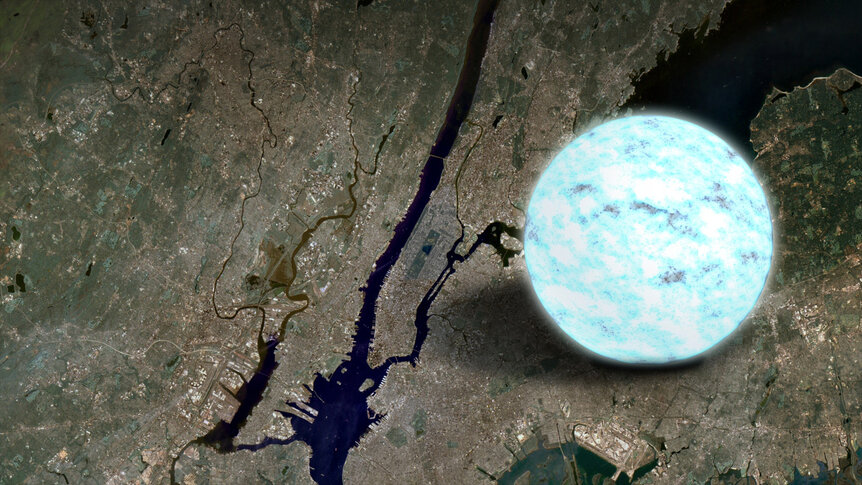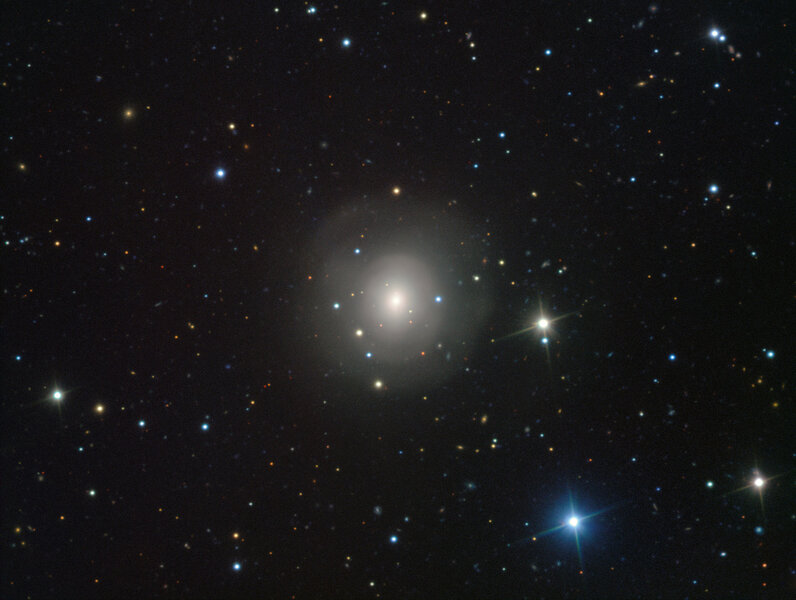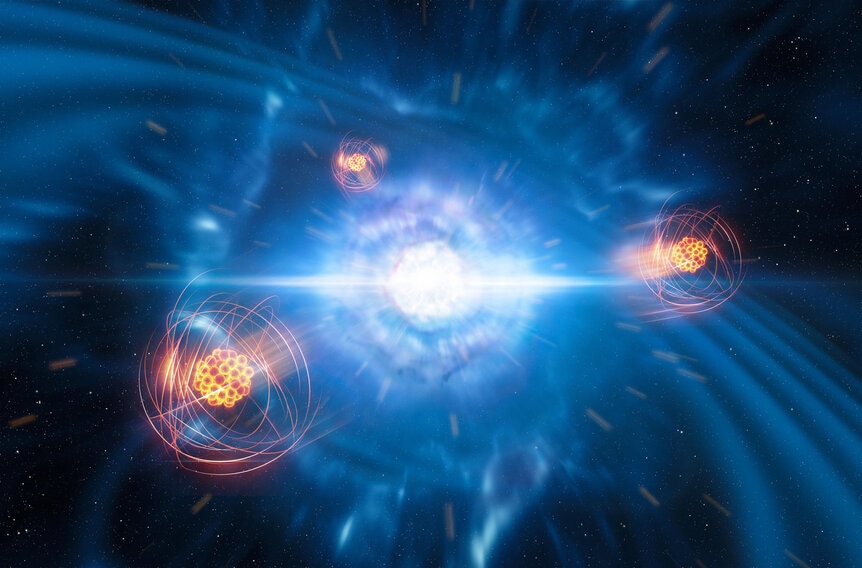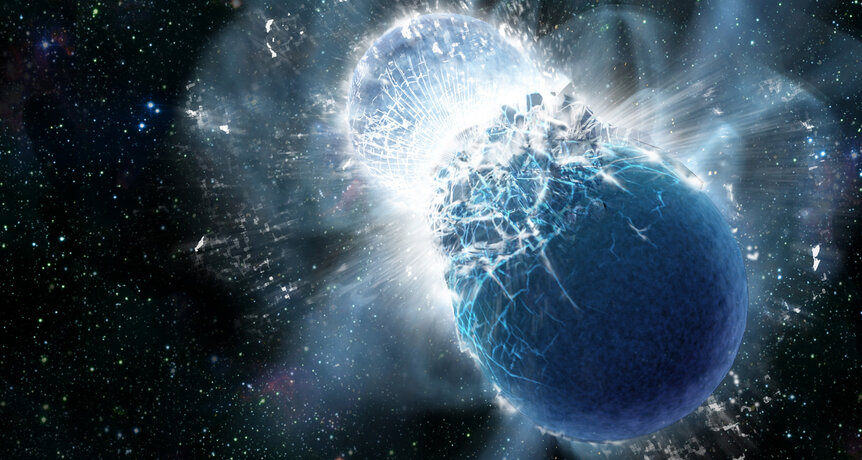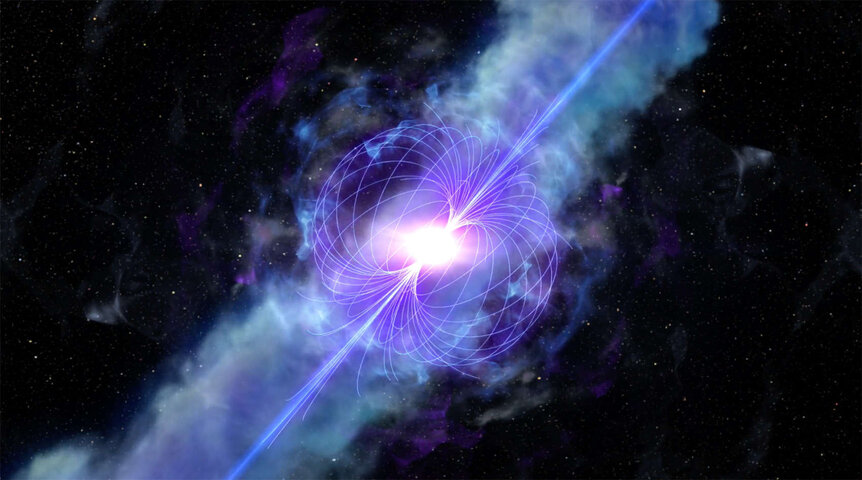Create a free profile to get unlimited access to exclusive videos, sweepstakes, and more!
X-rays glow from blast waves as colliding neutron stars create a kilonova
I love every word in that headline.
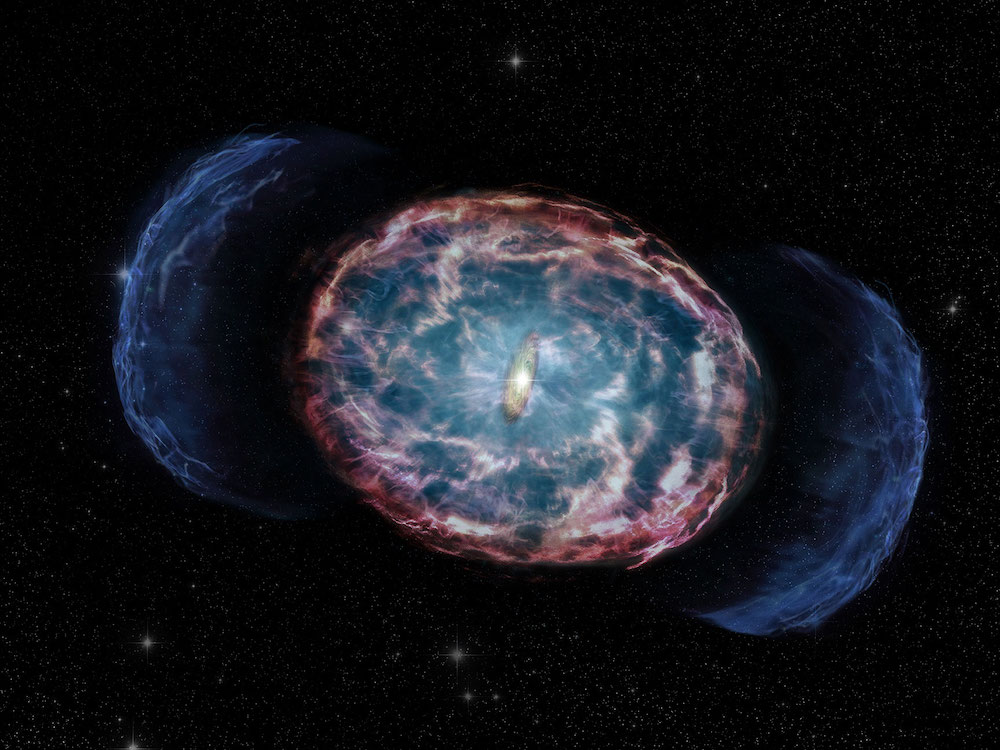
Astronomers have detected a second source of powerful X-rays coming from the aftermath of a pair of colliding neutron stars, indicating either the shrapnel from the explosion is slamming into material that surrounded the event, or that the aftermath of the merger created a black hole, and now material is falling onto it.
Either way, whoa.
A wee bit of background:
On August 17, 2017, a new window on the Universe opened up when very different detectors on and above the Earth felt the consequences of two neutron stars colliding.
Neutron stars are super-dense spheres of matter created when the cores of massive stars collapse while the outer layers of the star explode in a supernova. If two such massive stars orbit each other they can leave behind two neutron stars orbiting each other. As they orbit, they create ripples in the fabric of spacetime called gravitational waves, which expand away at the speed of light. This steals away orbital energy from the pair and they spiral together. Eventually, whirling faster and faster, they finally merge, creating a single blast of gravitational waves.
Binary black holes do this as well, but when they collide they emit no light. Neutron stars, on the other hand, have a lot of material around them stripped off the pair moments before the collision, and after the collision this material can explode outward at high speed. That creates a lot of light; less than a supernova but more than a still-powerful "regular" nova (which is an entirely different type of explosion). To split the difference, astronomers call this event a kilonova. As an aside, it's thought that a significant amount of elements like platinum, strontium, and gold are made in kilonovae.
Up until GW170817 — the designation of the event — only binary black hole mergers had been found by the LIGO/Virgo observatory, which can detect gravitational waves. But once the event was seen by LIGO/Virgo, astronomical observatories looking at the patch of sky where the event occurred also saw light coming from it, the first such event seen this way. Thus "multimessenger astronomy" was born: Seeing an event in the Universe not just through light or gravitational waves, but both.
Then things got weird.
Initially, a team of scientists used the Chandra X-ray observatory to observe the event right away, but didn't see anything. Still, it kept looking, and finally on August 26, nine days after the initial explosion, X-rays were seen [link to paper].
Astronomers deduced that when the neutron stars collided, the intense centrifugal force felt by the stars as they whirled around each other at near-lightspeed created a dense disk of matter around them, embedded with an incredibly strong magnetic field. This wound up creating two tightly focused beams of energy and matter blasting away from the event, what we call jets. One of the jets was pointed vaguely toward Earth, but likely tipped away from us by probably 15–25°.
Matter in the jet screaming away at a decent fraction of the speed of light would plow through the material that already existed around the stars, slowing as it did so. Eventually it slows to a critical speed and the jet loses its collimation, suddenly expanding rapidly into a wide cone. After nine days that got wide enough to include Earth in the beam, and we started seeing X-rays.
Since then the X-rays faded as expected... until March 2020, when the fading stopped and the X-ray brightness flattened out. That's unexpected; the jet should just fade until we can't see it any more.
This means there must be a second source of X-rays, one that's been there for a while but was nowhere near as bright as they jet, so we didn't see it. Once the jet faded, this source was detectable, and that's why we still see X-rays.
Whatever the source is, it's powerful: 3.4 years after the initial explosion, it's still cranking out energy at a rate 125,000 times the Sun's power, and that's just in X-rays! That's a lot of energy [link to paper].
There are two possible explanations for this second source. One is that the expanding debris from the explosion is slamming into material at large in the galaxy, the thin gas between the stars. This creates powerful shock waves that travel through the gas. Magnetic fields in the expanding debris get compressed by these shock waves, and that in turn can cause them to accelerate subatomic particles to incredibly high speeds, near that of light. These then emit X-rays through a process called inverse Compton scattering.
Another explanation is very different: If the two neutron stars were massive enough, after the collision they would have merged into a black hole. Material falling toward the black hole doesn't fall straight in; it piles up in a disk around it that gets extremely hot and can emit X-rays.
So which is it? The beauty here is that there's a way to tell. If the X-rays are from shocked material from the debris colliding with other stuff, it will fade over time. X-rays from an accreting black hole should be steadier. An even better way is to look for radio waves: Shock waves love to make radio energy, but black holes eating material not as much. So just seeing or not seeing radio light from this object may help figure out what's what.
Another interesting aspect of this is what happens in the milliseconds after the neutron stars collide. It's possible that they collide and promptly form a black hole; just BLOOP and they're gone. It's also possible that for a mere few thousandths of a second the powerful centrifugal force from their orbital speed causes the colliding stars to bounce, a little like the rebound you see when a drop of rock in a body of water. That may not sound like much, but neutrons stars pack a titanic punch, and this bounce can give an immense kick to material, accelerating it away at extremely high speed. If the X-rays seen are from explosion shrapnel slamming into material around the event, then models indicate it would've been accelerated by this bounce.
Either way, this event is the gift that keeps on giving. Nothing like this has ever been seen in such detail before, and we're learning about what happens when colossal events like this occur. Note: Computer hard drives and circuit boards use platinum, meaning the machine you're reading this on may have had some of its parts created in exactly this kind of explosion billions of years ago. How cool is that?
Note (March 11, 2022): This new work is based in part on observations taken of the kilonova in 2017 by a different team of astronomers, and due to the way I phrased things I made it sound like all the work was done by a different team. I edited the text above to make it more clear.
